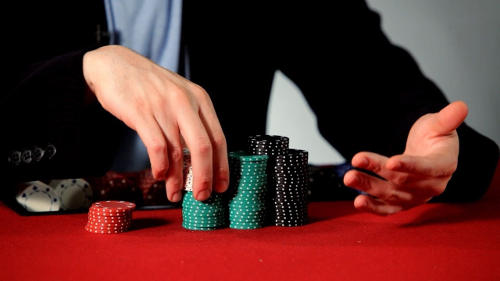Introduction
Back in part 1 of the Bluff or Check? series, we briefly looked at the concepts that govern firing the second barrel. Also known as a turn continuation bet, we’re talking about betting again as a bluff or semi-bluff when we’re called on the flop and end up seeing the turn. While it’s obviously important to know when to make this second bluff, it’s just as important to know when you shouldn’t be making it, and we’re going to tackle both sides of the issue here.
Instructive Examples
My teaching style is typically to lead with concepts and theory and then to move into examples that help reinforce these ideas and translate them into practical knowledge. We’re going to do the reverse here by leading with instructive examples instead to provide the key ideas that you should be considering in these situations.
No Point in the Second Barrel
Suppose we have 9c8c heads-up out of position on a flop of AsJh4d. We bet, and Villain calls. The turn is the Ac. In this situation, we have no reason to believe that bluffing would be profitable. It’s hard for our opponent to have many hands in his range that called on the flop that will fold on the turn, and the turn card actually makes our overall range weaker by cutting down the chances of us having an ace in our hand. Points to consider:
- Our opponent’s fold frequency is low.
- Our own range appears weak.
- We have no reason to believe any river card would give us the best hand.
Overall, it’s better to just check/fold here.
Everything Points to Another Bet
Suppose we have 9c8c heads-up out of position on a flop of Jh7c4s. After we bet the flop, Villain calls. The turn comes the Kc. This is one of the best types of situations possible because everything is pointing to bluffing being better than checking. Consider these aspects of the situation:
- Our opponent will fold a lot of hands that called on the flop.
- Our own range appears strong (we could easily have a king).
- We have a lot of equity if we’re called with a flush draw and a gutshot straight draw.
- Checking is not very attractive because we are out of position and would often have to check/call.
It’s going to be hard to find a situation where a bluff is more obvious to make.
Concept 1: Fold Equity
The card that comes on the turn combined with the texture of the flop will tell you most of the information that you need to know about what your fold equity is likely to look like. While it’s true that you can do a full range analysis of your opponent’s likely hands, estimates from the flop texture and turn card will get you close enough the majority of the time.
Overcards to the Board
If an overcard to the board comes on the turn, then you’re typically going to be able to get a bit more fold equity than average when you fold. This is especially true the more plausible it is for you to have the card that comes, so an ace coming on the turn will provide the maximum benefit to fold equity provided that there aren’t many ace-high hands in your opponent’s range after the flop call.
Exception: Draw-Heavy Flops
When the flop has a lot of potential for draws, you’re not going to have as much fold equity regardless of what card comes on the turn. The reason for this is simple: Whether right or wrong, a high percentage of players get attached to draws and will continue to call down on the turn after they call down on the flop.
Concept 2: Pot Equity
Another issue you have to consider on the turn in these scenarios is what your chances are of winning if you’re called. The draws that you hold are one part of the situation, but you also have to consider the implications of hitting a pair that can’t profitably value bet but that will win the pot a non-trivial percentage of the time.
Picking Up a Draw
The classic scenario for this is when you pick up a draw on the turn. Picking up a flush draw or open-ended straight draw is typically a good thing on the turn, but what you do with it will depend on the rest of the situation. If you’re in position, for instance, the value of checking will be a good bit higher than normal, so you’ll want to bluff less often. Along these lines, you should typically fire the second barrel in position with strong draws only if you have a whole lot of fold equity to go with it and/or if you have no real implied odds for hitting the draw if you check.
Mid-Strength Made Hands
Something that not enough players consider on the turn is how they should play the part of their range that picks up some showdown equity. In part 3 of this series, we looked at this idea in section seven titled “Hands With Showdown Value.”
The general idea here is that you have to have a checking range and a bluffing range on the turn. Your checking range should include a lot of the hands like mid-low single pairs that will be good at showdown a fair percentage of the time when it checks through. The stronger end of these types of hands are also needed for picking off bluffs on the river after you bet the flop and check the turn, and this is especially true if draws that were present on the flop miss on both the turn and river. These are situations where your opponent’s river bluffing range will be particularly weak.
Post Hands
Post hands in the SSNL Hold’em forum where you’re trying to decide if you should fire the second barrel or not. Myself and other regulars will be glad to help you out.
Submit your review | |










